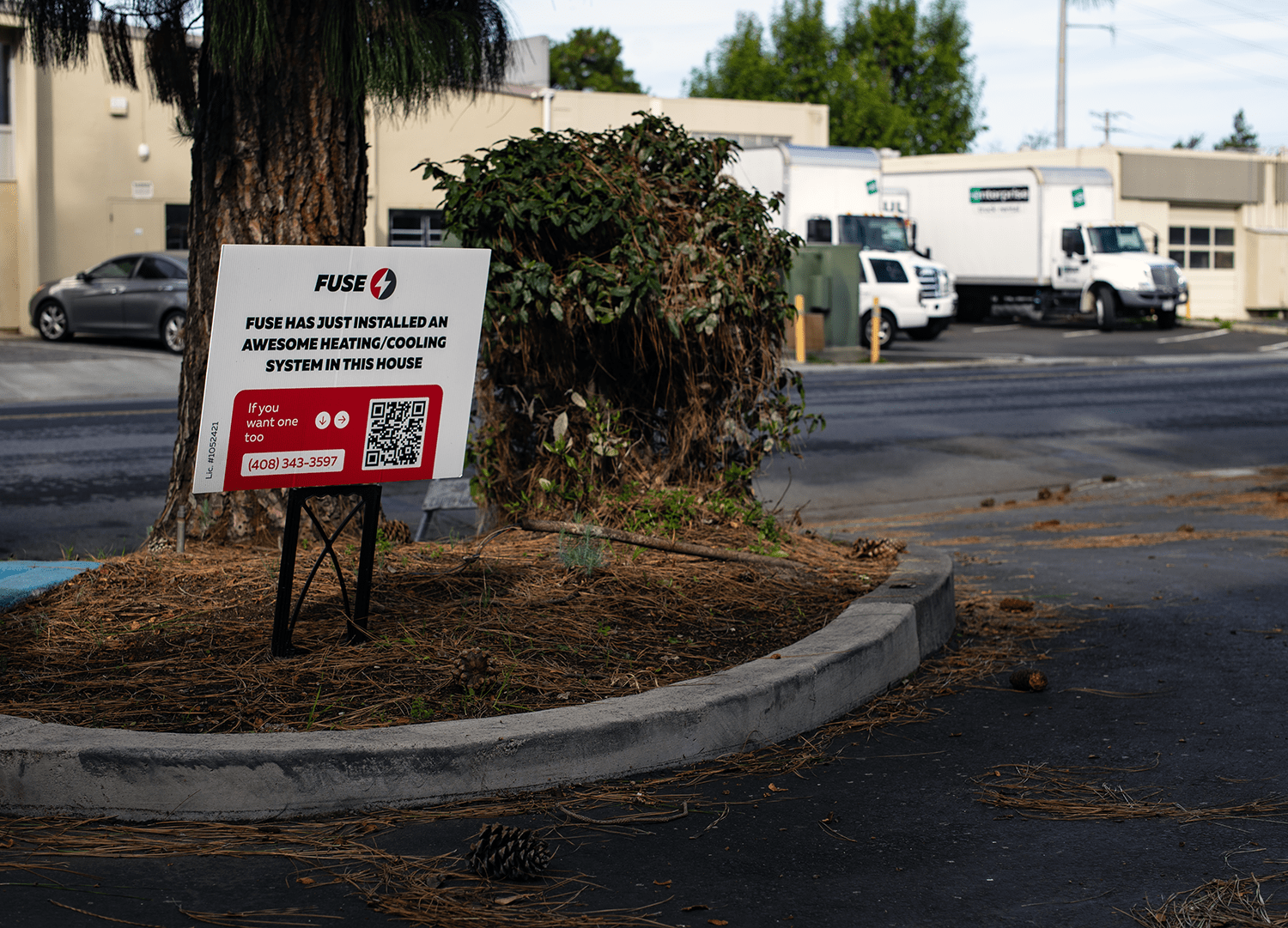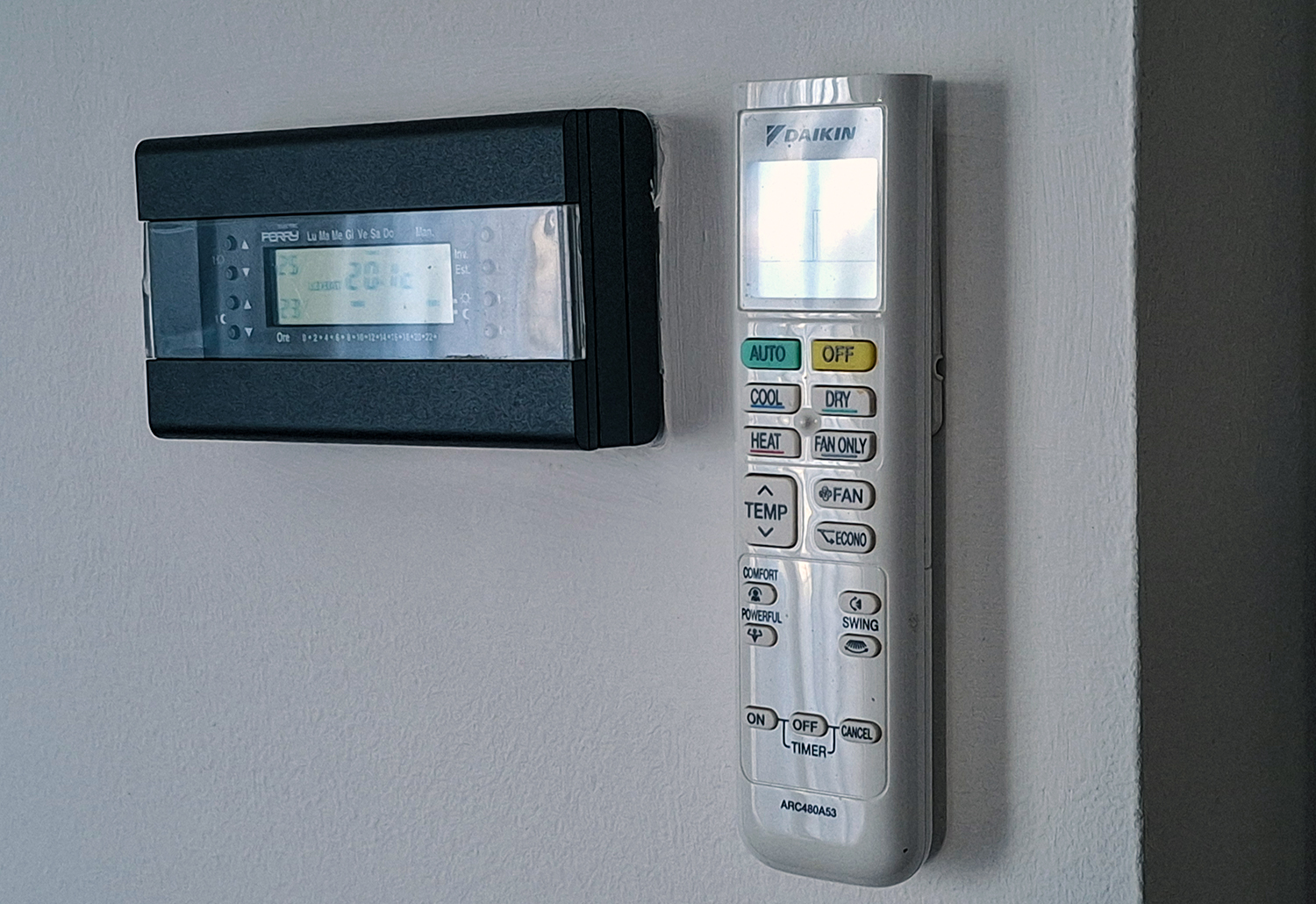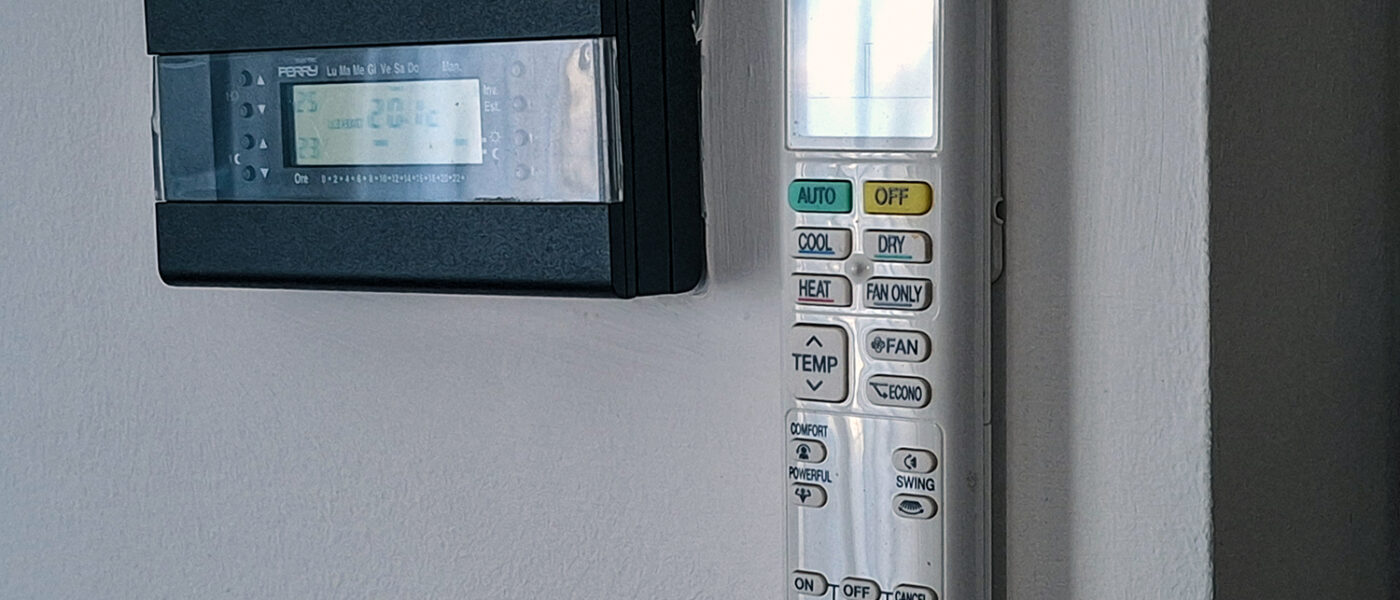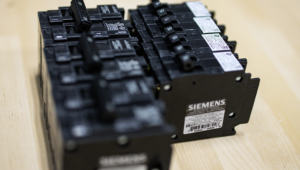Thermostat is a true game changer in your home’s temperature control. With it you get a convenient device that is much more functional then a remote control, and it won’t get lost somewhere behind the sofa. Call us at (669) 666-9219 or email support@fuseservice.com to get a specialist to sort out your doubts on thermostats. So let’s have a closer look at those devices, learn how they work and determine which one is best for you.

How Does a Home Thermostat Work?
Let’s start from the basics to find the winner in the smart vs programmable thermostat battle. The purpose of a thermostat is to regulate the heating and cooling system (also called HVAC) to achieve the desired indoor temperature. There are different types of thermostats. Modern thermostats are usually divided in two groups:
- Mechanical and electronic models. These thermostats detect ambient temperature and turn the heating or cooling system on or off accordingly.
- Programmable and smart models. These ones have a wide functional list and allow users to set schedules, adapt to changing conditions for greater efficiency.
What Is a Smart Thermostat?
Smart thermostat connects to the Wi-Fi and that opens a unique opportunity to control your temperature with a smartphone, tablet, or voice assistant. Moreover, it uses AI and learning algorithms to adjust heating and cooling processes based on your habits, weather conditions, and occupancy.
Benefits of a Smart Thermostat
If you wonder why smart thermostat is better than traditional one, check our list:
- Remote Access. It gives you an ability to adjust the temperature from anywhere using an app.
- Energy Efficiency. Smart thermostats save energy by learning your schedule and optimizing heating or cooling according to that information. Check our tips on maintaining your air quality in winter to achieve even better performance.
- Weather Adaptation. It also adjusts settings based on local weather forecasts.
- Usage Reports. You can find insights on energy consumption to help save money.
- Integration with Smart Home Devices. Not only do these devices allow you full thermostat control by phone, they also work with Alexa, Google Assistant, and Apple HomeKit.
Are Smart Thermostats Worth It?
Even though smart thermostats are usually more expensive than others, in the long term they provide significant thermostat energy savings. According to studies, devices like the Nest Thermostat And Ecobee can reduce HVAC costs by 10-15% annually. In addition, smart thermostats are most beneficial for people with irregular schedules or those who frequently forget to adjust the temperature.
Pros and Cons of Smart Thermostats
Every coin has two sides and smart thermostats are not an exception. And it’s important to know all the truth before you make a decision.
Pros:
- Automatic learning and adaptation
- Remote control via app
- Weather-based adjustments
- Reduces energy bills
Cons:
- Higher upfront cost
- May require professional installation
- Not all HVAC systems are compatible
- Privacy concerns (data collection)
What Is a Programmable Thermostat?
Another way to save some money on your energy bills is a programmable thermostat. With this one you can set temperature schedules in advance, adjusting heating and cooling based on time and day. On the other hand, a programmable thermostat can’t learn but still helps save energy by avoiding unnecessary heating or cooling. It is mostly suitable for those who have an established routine.
Benefits of a Programmable Thermostat
- Affordable. Programmable thermostats usually cost from $30 to $100, making it a budget-friendly option.
- Energy Savings. Such thermostats can reduce HVAC costs by 5-10% with proper scheduling.
- Simple Operation. No internet connection required, reducing cybersecurity risks.
- Compatible with Most HVAC Systems. Works with most traditional heating and cooling setups.
Does a Programmable Thermostat Save Money?
One of the most important criteria in question of programmable thermostat vs smart thermostat is savings. Obviously, the savings depend on how well you use it. The U.S. Department of Energy estimates that setting the thermostat 7-10°F lower in winter or higher in summer for 8 hours a day can save up to 10% on energy bills. Also if you feel like it’s becoming colder but you haven’t changed your thermostat settings, check the most common reasons for this trouble.
Pros and Cons of Programmable Thermostats
These thermostats also have their advantages and disadvantages. Check them before making a final decision.
Pros:
- Lower initial cost
- Energy bills reduction when used properly
- No Wi-Fi dependency
Cons:
- No smart learning features
- Must be manually programmed
- No remote control capabilities

Smart vs Programmable Thermostat: Which Is Right for You?
Your choice should be made based on your HVAC system type as well, and to find more about its types read our article. Also consider all aspects as your budget, lifestyle, and of course needs. Here’s a comparison to help you decide:
| Feature | Smart Thermostat | Programmable Thermostat |
| Price | $100 – $300+ | $30 – $100 |
| Remote Control | Yes (via app) | No |
| Learning Capabilities | Yes | No |
| Weather Adaptation | Yes | No |
| Energy Savings Potential | 10-15% | 5-10% |
| Best For | People with irregular schedules, smart home users | Homeowners who stick to a consistent routine |
Final Verdict: Which One Saves More?
You have to follow paths in question of smart vs programmable thermostat to achieve energy efficiency with a thermostat. A smart thermostat will be a perfect investment if you want maximum energy savings and convenience. On the other hand, if you prefer a lower upfront cost and don’t need smart features, a programmable thermostat still provides energy savings when used correctly. Both options can reduce energy bills, but smart thermostats offer more automation and long-term savings. If you have a consistent daily schedule, a programmable thermostat may be sufficient. However, for flexibility and advanced energy-saving features, a smart thermostat is the superior choice. After all, follow us on Instagram, Facebook, YouTube and TikTok, where you can find all our installations, useful tips and so much more about home appliances.






